The last battle.…
On 16 April 1746 the last battle to be fought on British soil took less than an hour to reach its bloody conclusion here on what is now know as Culloden Moor. It was not, as often portrayed, a battle between the Scots and the English: large numbers of Scotsfought on the Government side while the Jacobite army included French units and some English Jacobites. Rather it was the last chapter in a sporadic civil war for succession to the throne that had been under way since 1688.(for more Historic Information have a visit on this Page ).So Culloden marked the end of a sporadic civil war for succession that had lasted 60 years. But the brutal reprisals and suppression of the Highlands that followed under the command of the Duke of Cumberland (“Butcher Cumberland”) brought about the end of a way of life, and the end of a meaningful clan system.
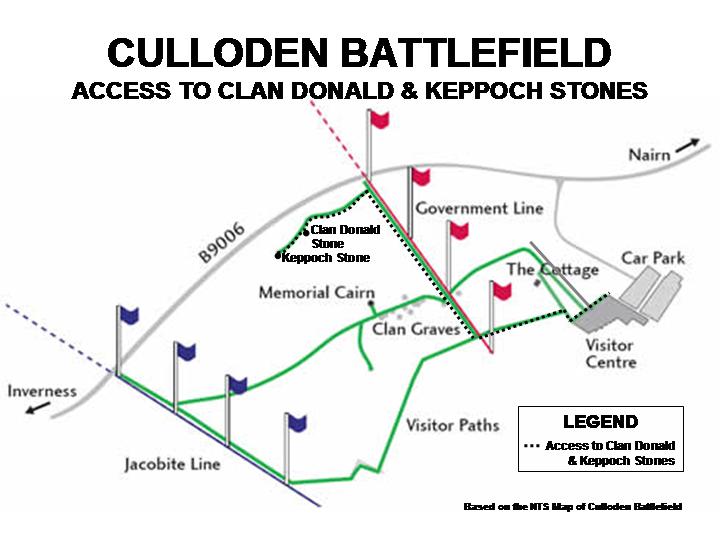
In less than an hour it was all over. Some 50 Government troops had been killed and a further 300 wounded. A much larger number of Jacobites and others had been killed during the battle. Many more were killed as they lay wounded on the battlefield or after being taken prisoner. And the Government dragoons dispatched to hunt down fleeing Jacobites roamed far and wide, indiscriminately killing rebels, bystanders, spectators, residents and anyone else who was within reach. It is estimated that the total dead on the Jacobite side was around 1,250.
The Wall at the new Visitor Center is a reminder of all the Men who died this Day. The Number of fallen on both sides are represented of projecting stones in this wall.

The original farmhouse of Leanach survived the battle and has been restored several times. The roof is heather thatched, a traditional Highland craft.During the Battle of Culloden Leanach Cottage was situated in between the Government lines and it is likely the building would have been used as a field hospital for the government men.

The Memorial Cairn and some Headstones
Possibly the most recognisable feature of the battlefield today is the 20 feet (6.1 m) tall memorial cairn, erected by Duncan Forbes in 1881 In the same year Forbes also erected headstones to mark the mass graves of the clans.
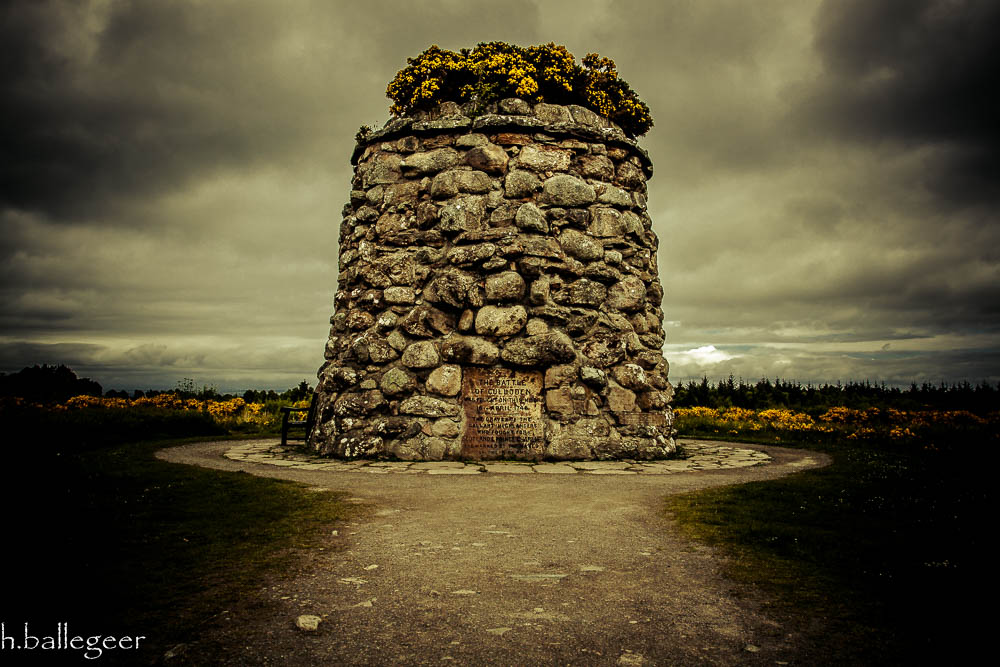
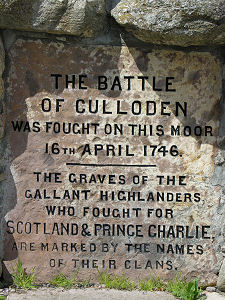
Most tragic is the grave of the ‘Mixed Clans’ – members who were so brutally disfigured in the battle that their remains were unidentifiable. Their family name and clan ties forever wiped out from history. As a reader of Diana Gabaldon‘s “Outlander” the stone of Clan Fraser caused me goosebumps (fictional or not..the Name alone did his Job)
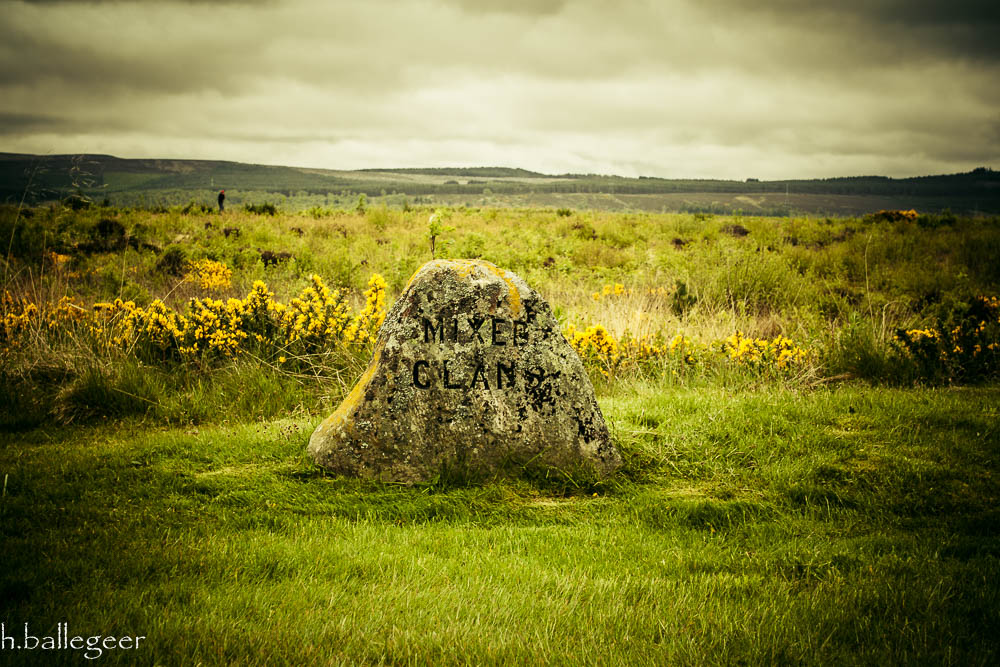

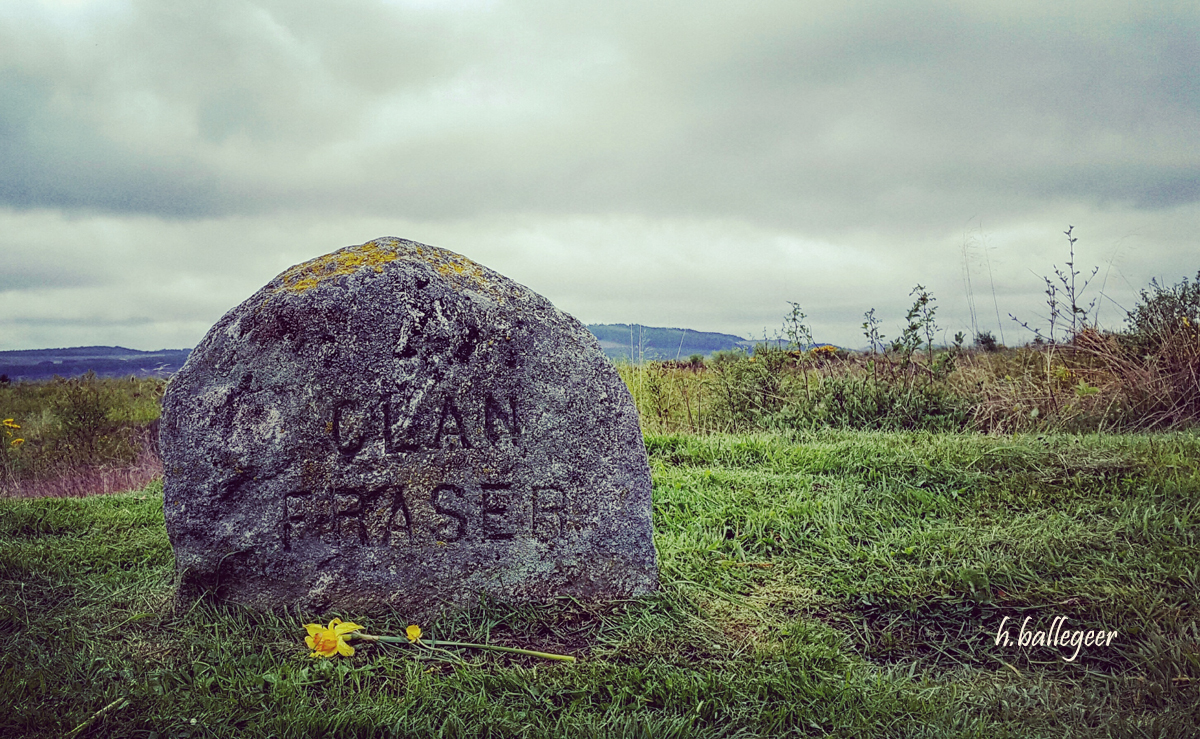
It was a strange feeling on this battlefield. When one sees how close the troops were, how many have died in this field, how much blood this soil has absorbed while Culloden Moor is beautiful to look at. With the small water furrow, the marshy ground you can actually see what it has been for a truly “dirty” battle. In some places the flora looked like from another World.
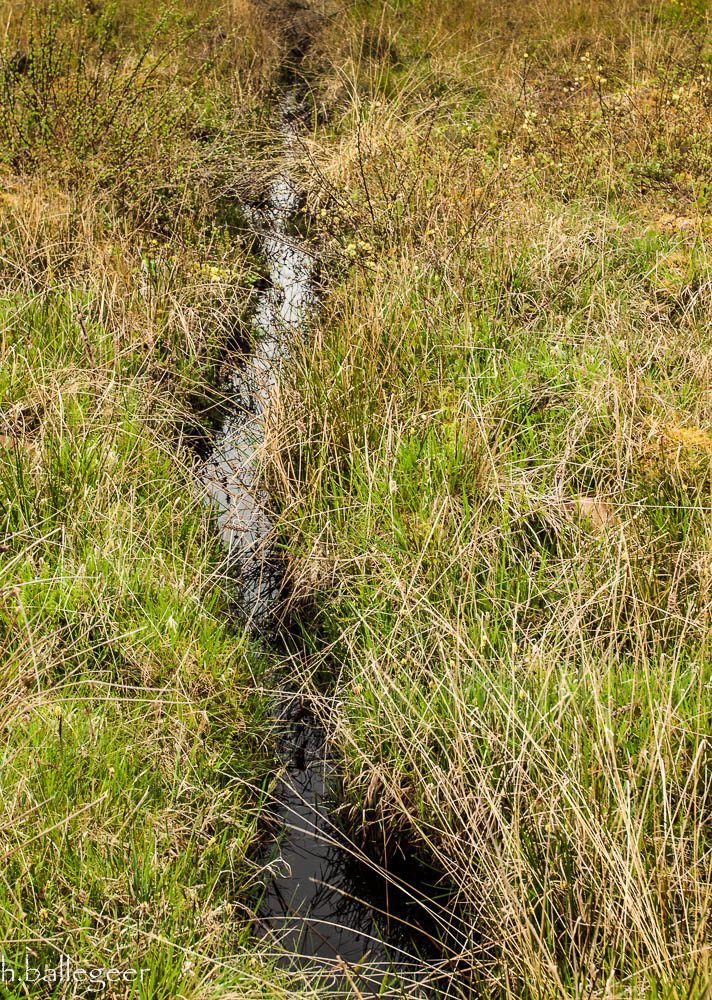
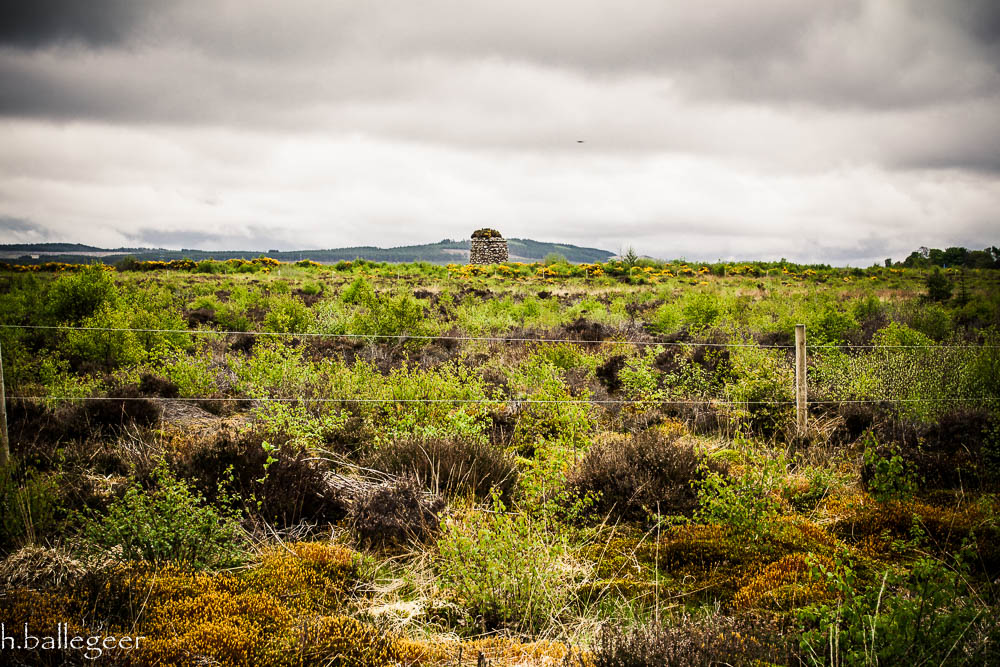
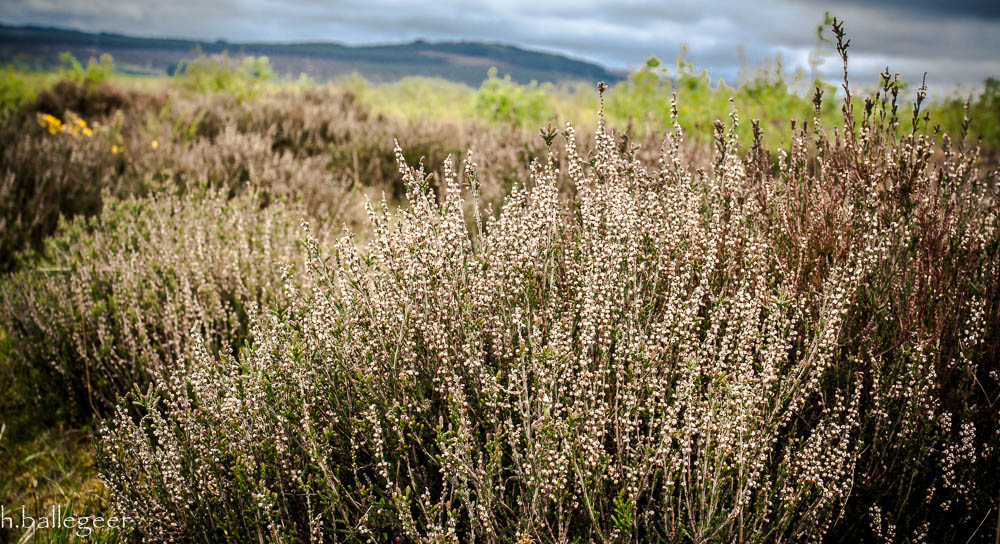
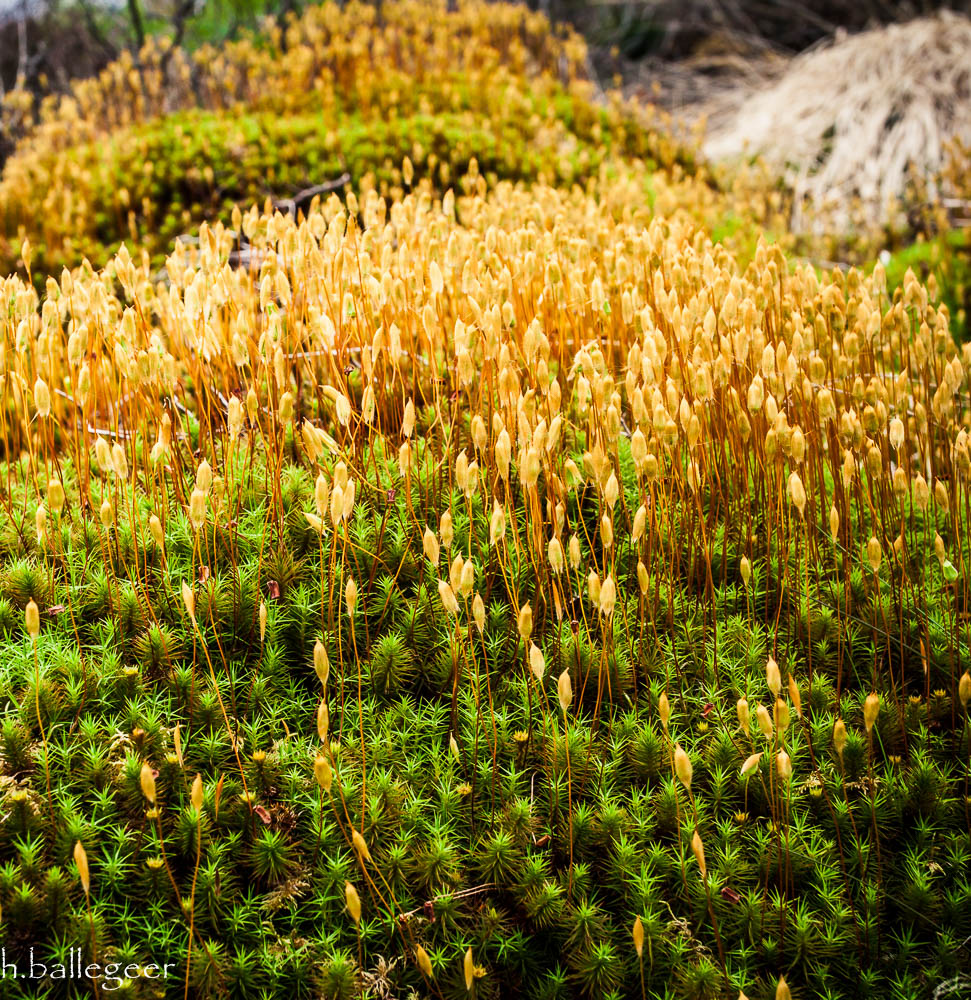
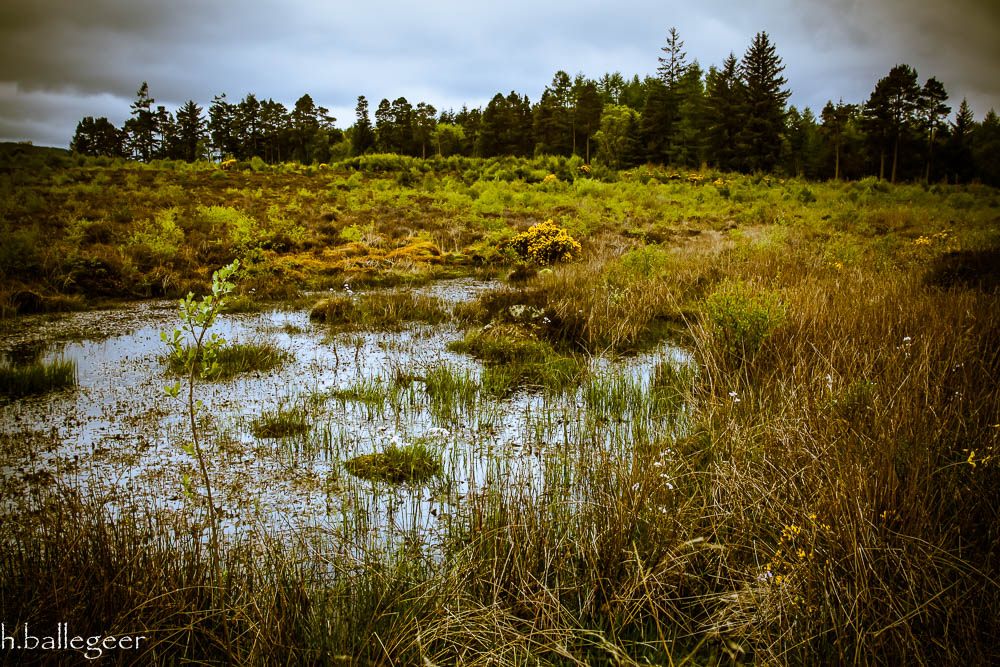

But you will always be reminded that you are on a battlefield. So for example, through this wall, which was used by the British as ambush.
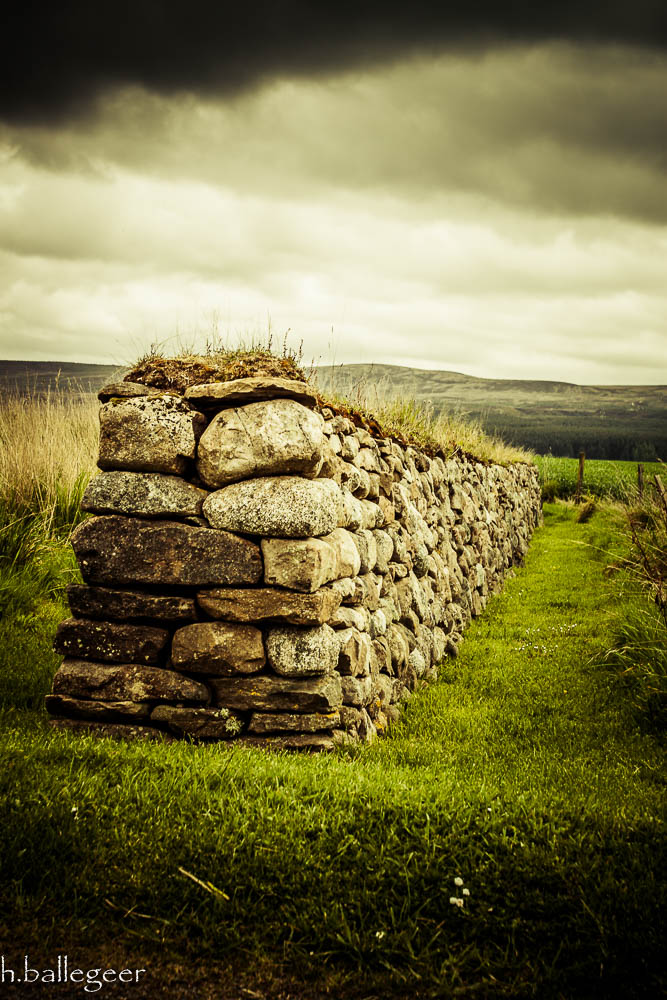
Here a Video with most of the Highlights and the music of Capercaillie (Karen Matheson) — Cumha Do Dh‘uilleam Siosal, (see translation below)
The Lone Piper (David Methven) — Glengarry‘s Lament
“Cumha Do Dh‘uilleam Siosal” lyrics translated to English:
“Lament for William Chisholm”
Oh young Charles Stewart
Your cause is the reason of my sorrow
You took from me everything I had
In the war on your behalf
I am not mourning cattle and sheep
But my partner
Since I am left alone
With nothing but my shroud
My bright young love
I am torn apart
And although I say it, it is no lie
My joy turned to sorrow
Since you will not return from death
One of your wisdom and understanding
Was not easy to find
And not one stood at Culloden
Of your appearance and bravery
My bright young love
You really should visit this Place when you are in Scotland. All Informations can be found on the Site of the National Trust of Scotland.
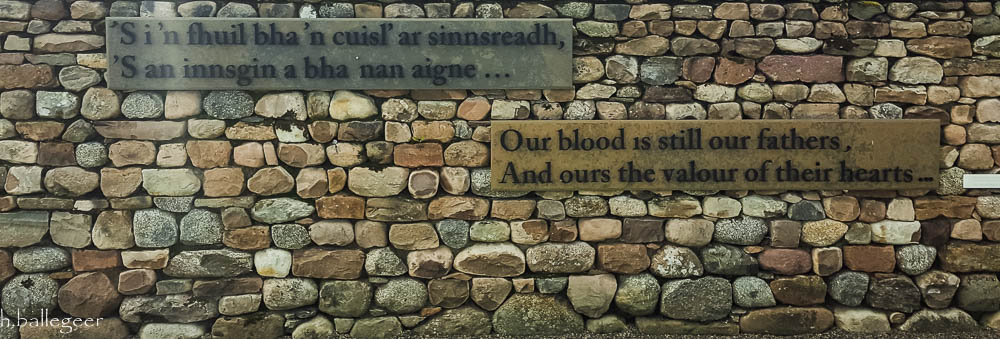
Waaaauw knap Heike ??
Hi Viviane
yes..WAAAAUW is a good Word :). It was an really impressive Visit…LG Heike Ginger